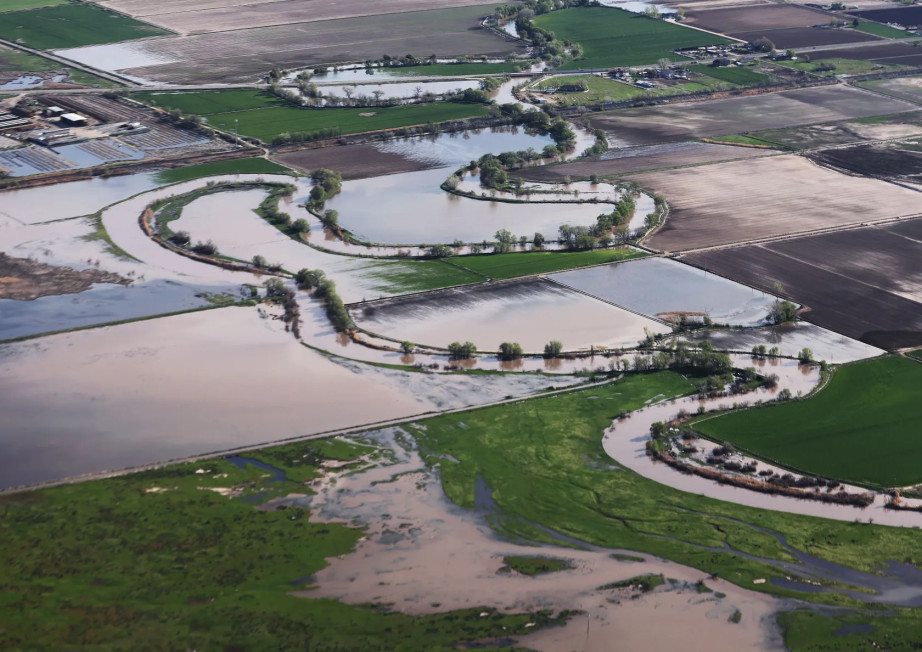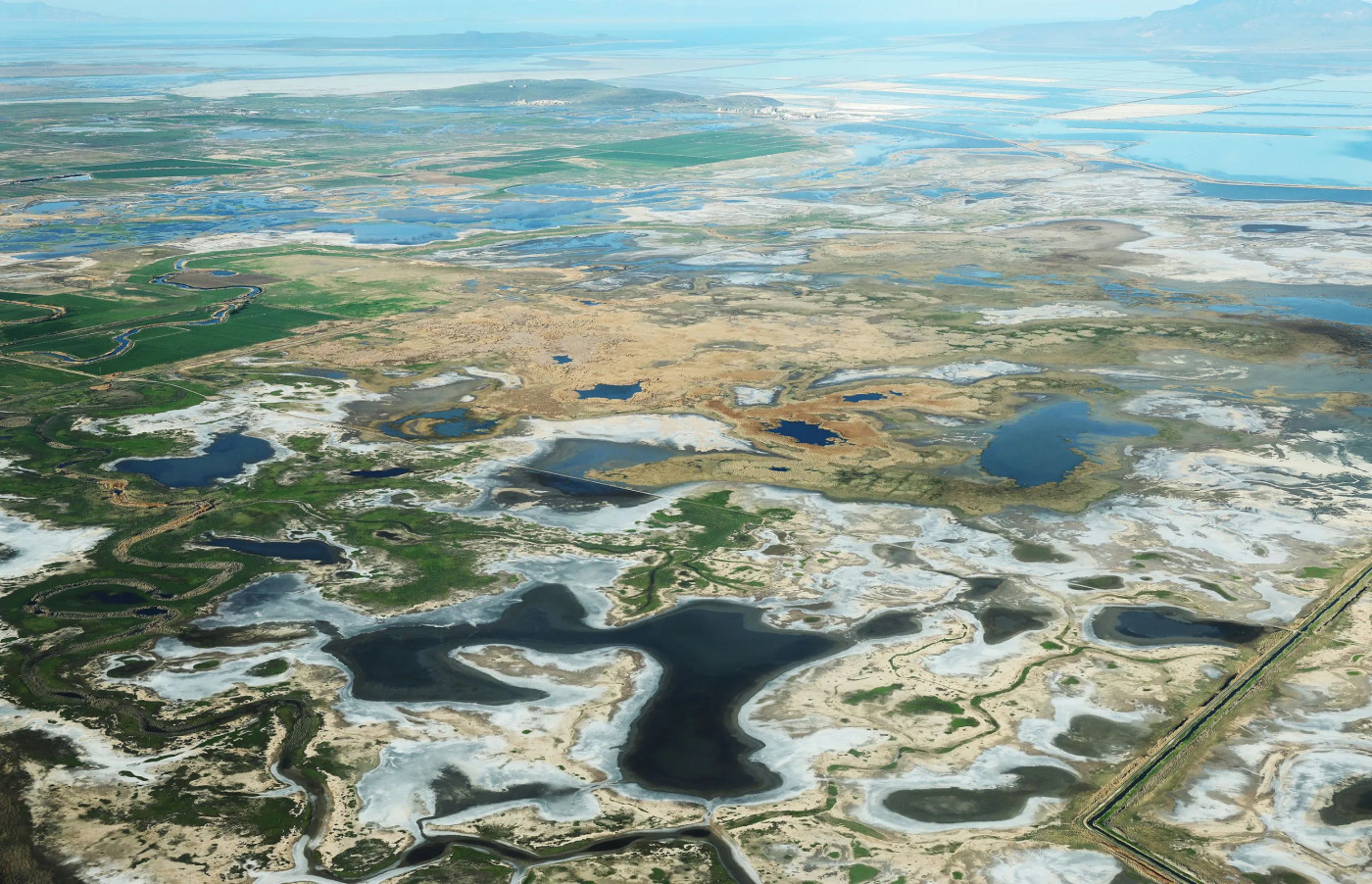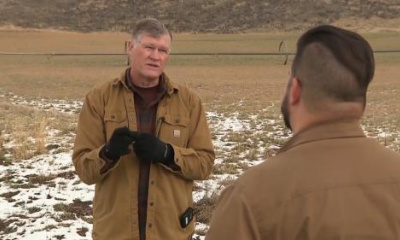Aerial tour by EcoFlight showcases uniqueness of Utah’s saline lake
Pilot Gary Kraft has flown over the Great Salt Lake at 15,000 feet, but this week was a different experience.
At an altitude of 1,500 feet, Kraft and his guests were treated to a closer look at the many facets of the largest saline lake in the Western Hemisphere and the eighth largest in the world.
“It was fantastic,” he said. “I didn’t know the natural beauty of the Great Salt Lake,” he commented, after the flight in the Cessna 210 ended.
On Wednesday, the lake was a kaleidoscope of colors. Bright red in the north arm, patches of barren-looking playas, a brilliant blue bouncing off the clear sky and shimmering white squares denoting evaporation ponds. From the air, you could see the causeway berm that separates the saline-filled north arm from the south arm.
The berm was raised four feet in July 2022, but due to this year’s snowpack, water flowing into the Great Salt Lake from the south arm is starting to trickle north. The lake has come up 3.5 feet.
EcoFlight is a nonprofit conservation organization that flies mostly in the Intermountain West and treats its guests to views impossible to see from the ground and helps them appreciate the vastness of what nature has to offer. It works to educate people on the importance of critical landscapes, the value of saving them and to bring diverse interests together.
“We’re here to create a conversation and get good outcomes that protect our wildlands,” Kraft said.
On the 30-minute flight, the plane flew over some flooded farms in western Weber County. This year’s record snowpack is turning into a flooding headache for thousands, led to an emergency declaration by Utah Gov. Spencer Cox and has people on high alert over the danger of bulging rivers and streams.

Flooding in Weber County due to snowmelt is photographed from above on Wednesday, May 3, 2023. Jeffrey D. Allred, Deseret News
Kraft has flown over the shrinking Salton Sea in southern California, where — like the Great Salt Lake — windblown dust with toxins are a threat to public health.
He, like Katie Ricks, assistant director of the Utah Division of Forestry, Fire and State Lands, worry a wet year like this will lull people into complacency and long-term fixes will not take priority.
Ricks said it is tough because of the diverse interests at the table: agriculture, industry, water right holders and more.
“It was good to see the lake firsthand,” she said. “But even with this water coming in, we are looking for long-term solutions.”
The Utah Legislature has spent more than a billion dollars in the last two years aimed at water conservation and tackled policy shifts that are critical, including allowing Ricks’ division to obtain or lease water rights for the Great Salt Lake and setting up a $40 million trust to raise and leverage money for the benefit of the lake.
In March, The Church of Jesus Christ of Latter-day Saints donated 20,000 acre-feet of water for the lake in perpetuity — the largest water donation in state history.
So there are solutions out there based on will, but the reality is the lake dropped to its lowest recorded level last fall and now has 800 square miles of exposed lake bed. That exposure creates the same concerns as Salton Sea when it comes to dust laden with metals and the infamous Owens Lake in California — once the nation’s largest source of PM10 pollution.
Rep. Doug Owens, D-Millcreek, and a member of this year’s legislative Great Salt Lake Caucus, was among lawmakers who took the EcoFlight tour, hitting the skies on Tuesday.
Two years ago, he organized Blackhawk helicopter tours with the Utah National Guard and was pleased to see the difference after this year’s record snowpack. About 80 lawmakers were flown over the lake.
“It was great compared to what we saw before,” he said. “It was fun to see a lot more water in the lake ... I am glad to see the system getting back to better health.”
With that said, the lawmaker, who secured $8 million in funding for a turf buyback program, said now is not the time to relax over the fate of the Great Salt Lake.
“We are committed to the idea that it will take more than one good water year to address the lake,” he said. “I do worry that people could be lulled into a false sense of security.”
While the state Legislature made important progress during the past two years in the arena of conservation and the lake, there’s much left to do, he said.
“We still need to keep the pedal to the floor,” he said. “There’s more work to be done.”
He lamented about all the new development he saw from the area, much of it with lush lawns.
“We need to make a shift to better landscaping.”









